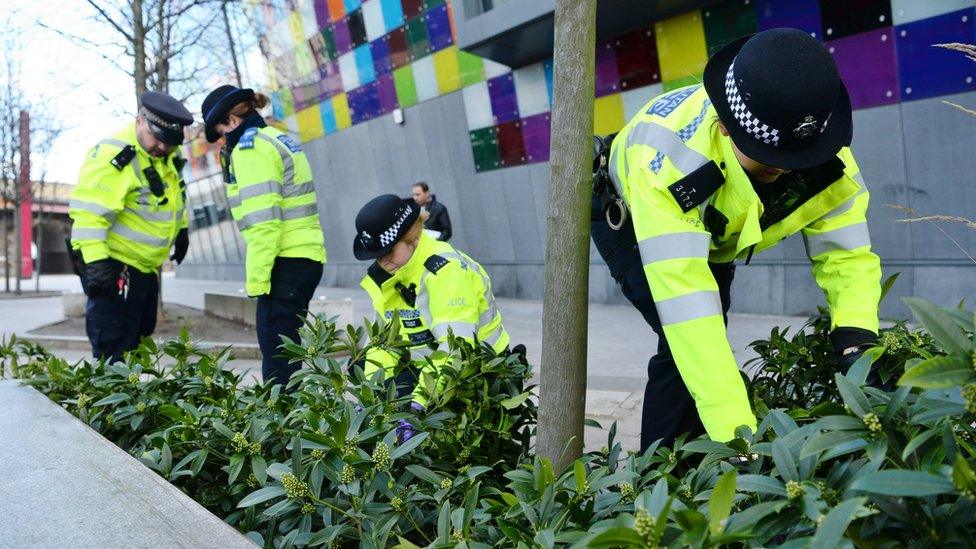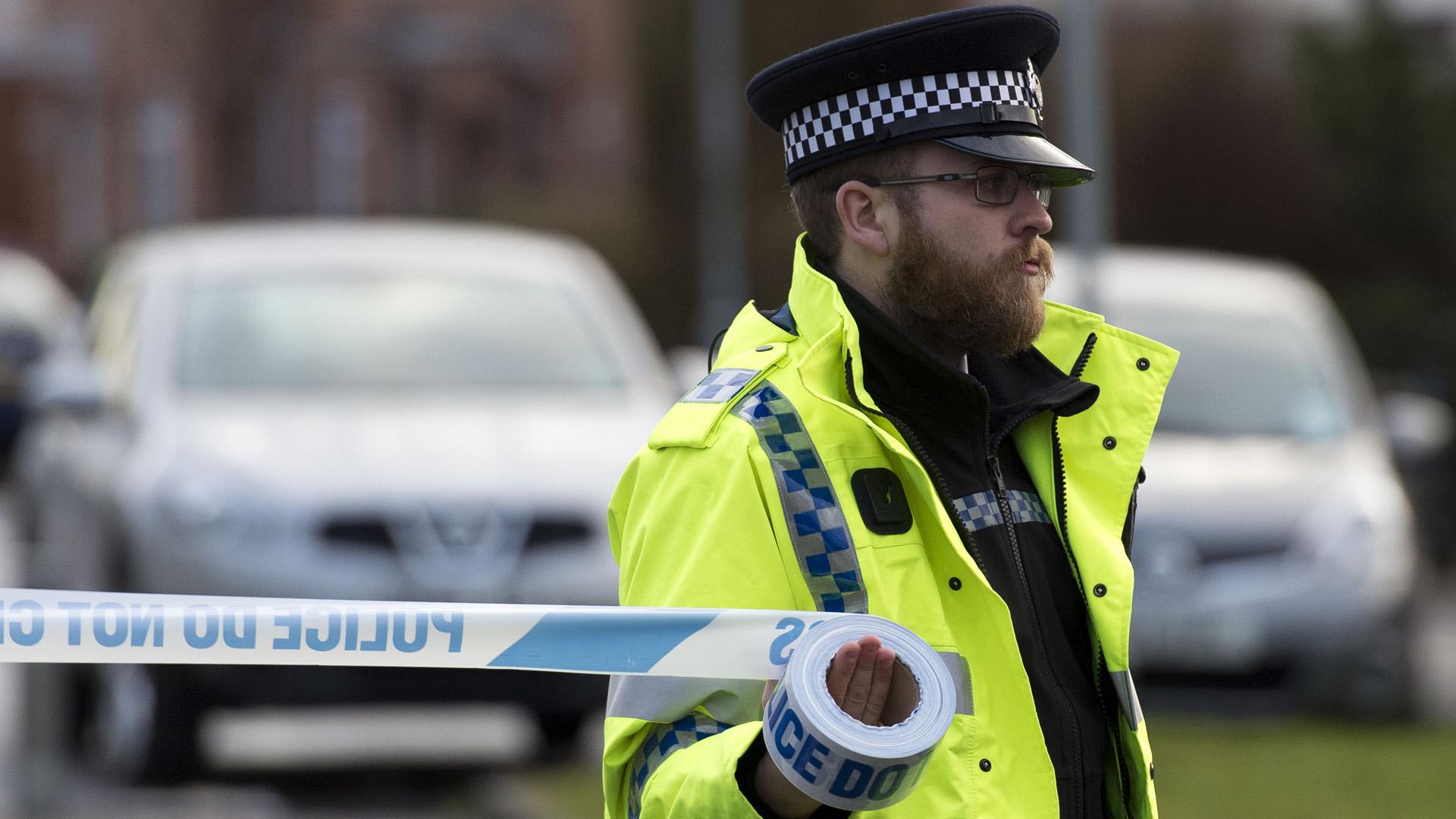Knife crime in England and Wales rises to record high, ONS figures show
- Published

Knife crime in England and Wales increased last year to a new record high, figures released by the Office for National Statistics have shown.
The ONS said police recorded 45,627 offences in the year to December 2019.
That is 7% more than in 2018, and the highest since knife crime statistics were first collected in 2010-11.
The figures - which do not include Greater Manchester Police because of IT issues - showed a 13% rise in the West Midlands.
Downing Street acknowledged there was "more to be done to crack down on thugs carrying knives and ensuring they are properly punished".
And Diana Fawcett, chief executive of the charity Victim Support, stressed that while the UK's streets were currently "quieter" due to coronavirus, victims of historic knife crime were still coming to terms with their experience.
"Many victims will still be dealing with the emotional consequences of threats or attacks which took place long ago," she said.
Robbery offences were also up - for the fourth year running - with an annual increase of 12%, to 83,930 offences.
There were 670 cases of murder and manslaughter in 2019, excluding Greater Manchester Police, which is up 15 on the year before.
The total includes 39 people whose bodies were found in a lorry in Grays, Essex, in October.


These figures are a reminder that, until the coronavirus outbreak, urban areas were facing an epidemic of a different sort - knife crime.
The number of offences has increased by more than 20,000 in five years, with London now accounting for a third of them.
The rise appears to have been driven by a recent acceleration in the number of knifepoint robberies - the number has doubled in four years - as well as a surge in stabbings: together, there were 40,000 offences last year.
The figures do not include the period immediately before and during the lockdown, but statistics released by the National Police Chiefs' Council last week showed that serious assaults had fallen by 27% and robberies by 37%; it's thought knife crime will have followed a similar pattern.
The challenge for police and communities when people return to the streets will be to ensure the numbers don't return to the record levels seen last year.

Overall trends in crime remain broadly stable, according to the ONS, with the Crime Survey for England and Wales - which includes offences that are not reported to police - suggesting there was a fall of 5% compared with 2018.
Home Secretary Priti Patel described the fall as "encouraging" and a "step in the right direction".
However, Yvette Cooper, chairwoman of the Home Affairs Select Committee, called for a "comprehensive national strategy" to deal with knife crime.
"As the committee has warned, the police have been too heavily overstretched for some years and we need more police officers," she added.
Knife crime: What's it like to be stabbed?
The proportion of suspects charged with a crime in England and Wales, meanwhile, has fallen to a new record low.
Home Office figures show that only one in every 14 offences led to court proceedings - less than half the rate five years ago.
The charging rate has been in decline almost continuously since 2014-15, when changes were made to the collection of the data.
Last year, 7.1% of crimes resulted in a suspect being charged or ordered to appear in court.
The previous year it was 8.2% - and in 2014-15 it was 15.5%.
The percentage of crimes in which suspects were cautioned has also fallen, to 1.3% from 4.6% in 2014-15.
The main reason for the decline appears to be an decrease in the number of victims who are co-operating with police investigations and prosecutions.

Home Secretary Priti Patel described the slight fall in overall crime as "encouraging"
In 2014-15, there were 8.7% of cases where the victims did "not support action".
Last year, that figure had risen to 22.9%.
The lowest charging rate was for rape, with just one in every 66 offences recorded by police leading to a prosecution, or 1.5%.
In more than 40.6% of rape cases the victim did not support action being taken.
- Published23 January 2020

- Published17 October 2019
